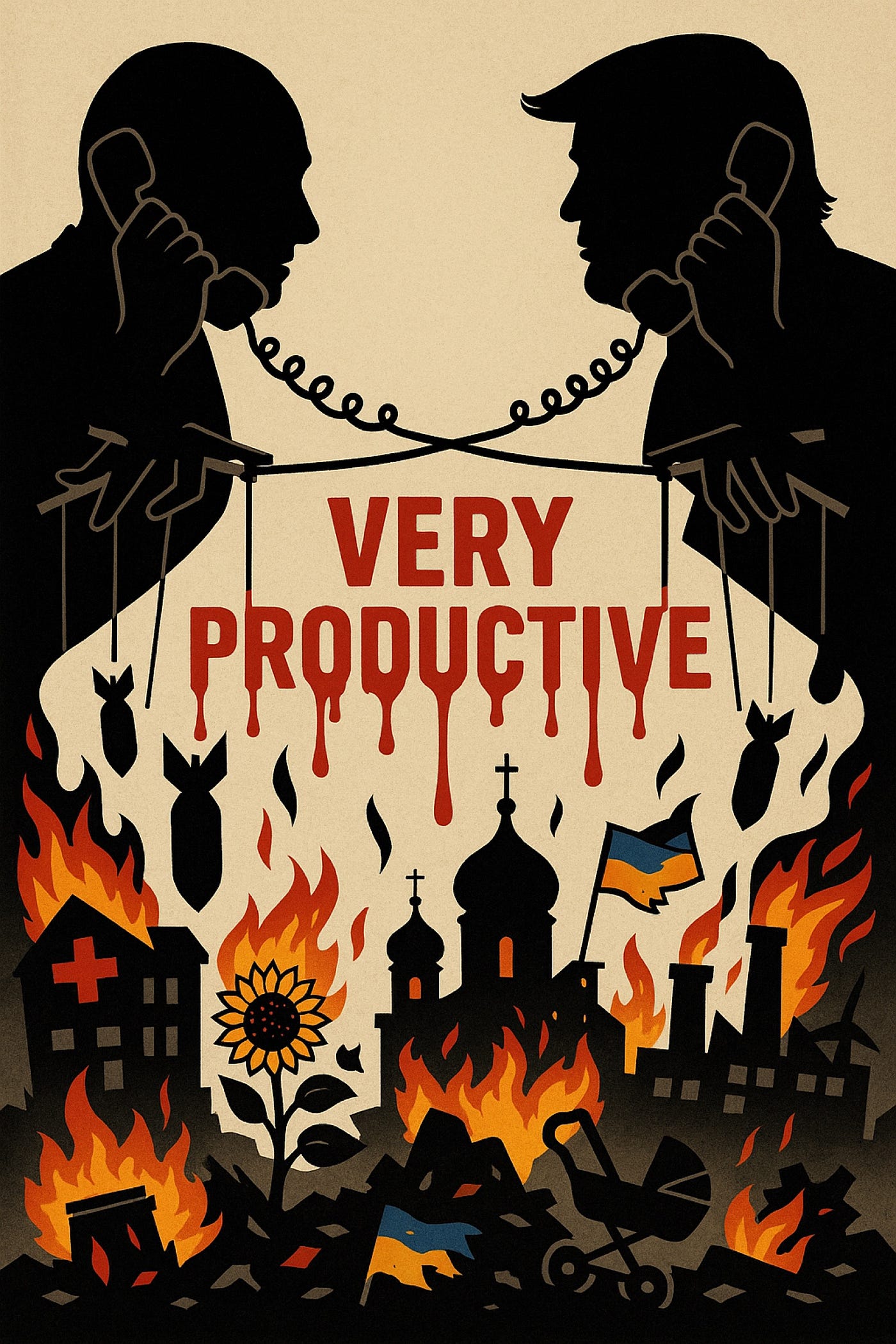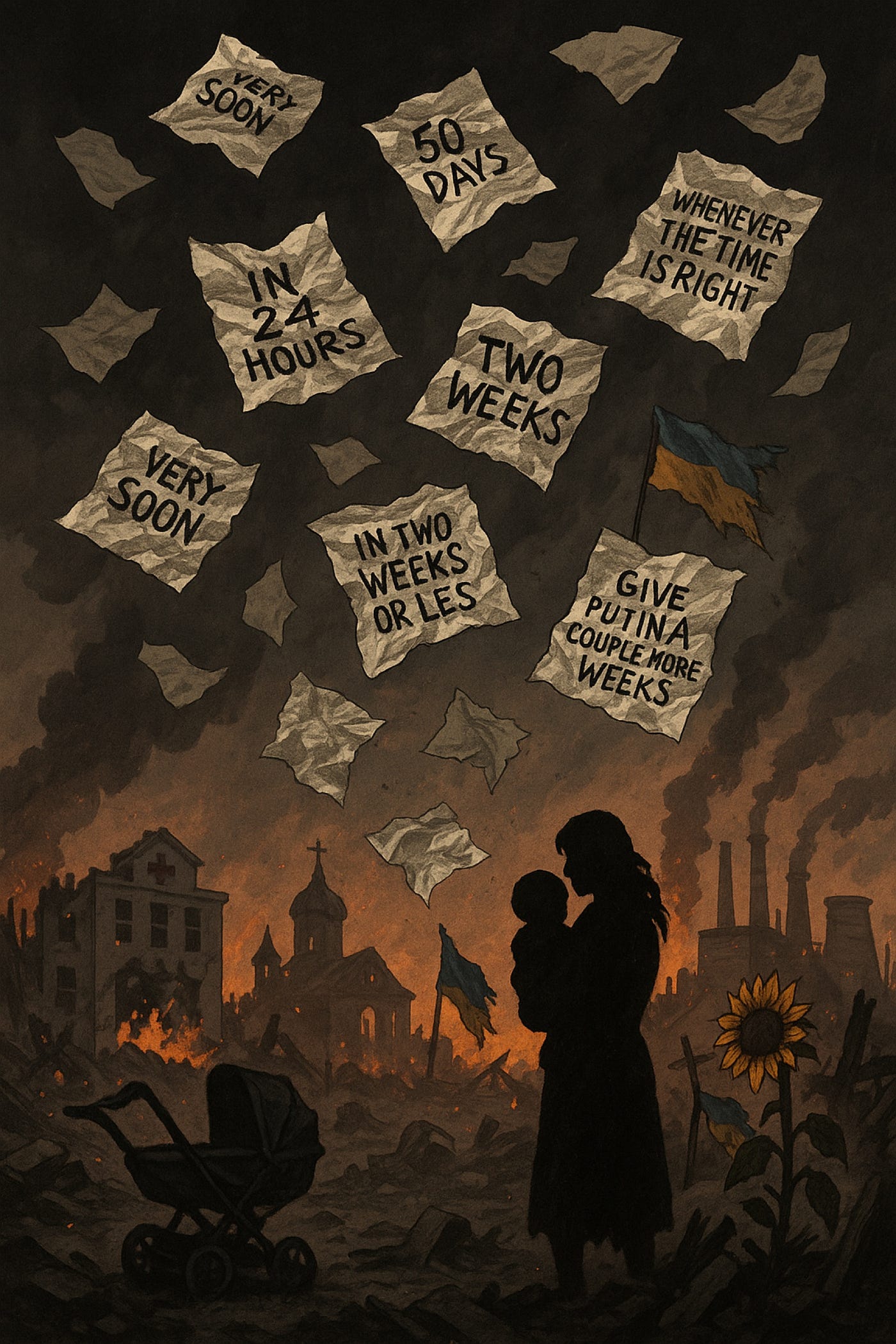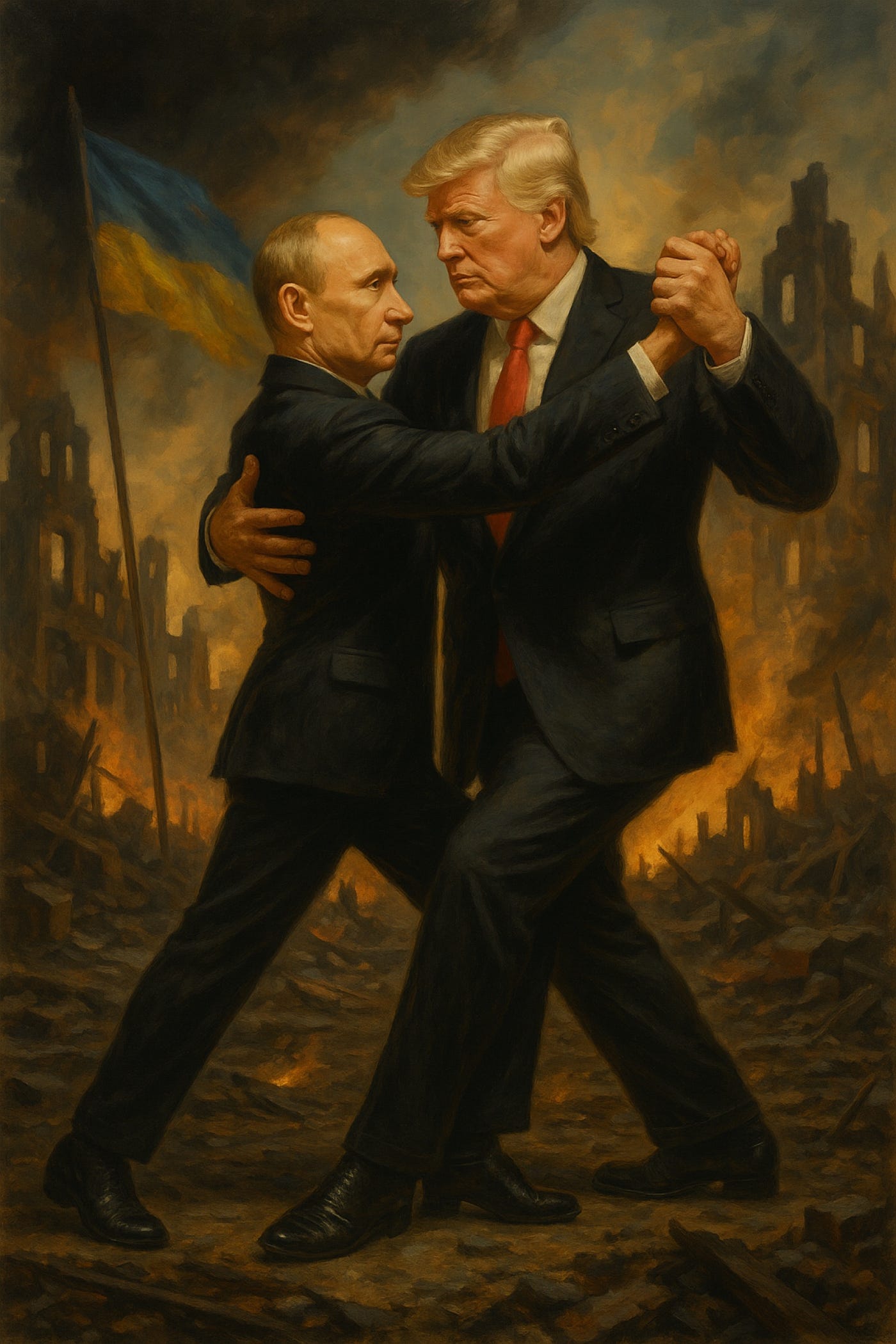*原文鏈接:https://medium.com/@giorgioprovinciali/trump-and-putin-are-tangoing-on-the-ashes-of-ukraine-b88a20eef4f6?sk=92e9300b9b08ea51acebce6d377571ff
感激您重視我們為提供真實的、第一手戰場信息所做的努力,您可以通過支持我們的籌款活動來幫助我們購買反無人機“РЕБ”設備。
在過去的三年裏,作為自由撰稿人,我們一直在烏克蘭戰爭的所有前線進行報道,自從大規模…
https://www.paypal.com/pools/c/9jdpPchpGi
Trump and Putin Are Tangoing on the Ashes of Ukraine
By: Giorgio Provinciali
Live from Ukraine
If you value our efforts to deliver authentic, firsthand information from the field, you can support us by backing our fundraising campaign
Kyiv – Many news agencies report that shortly after landing in Washington, President Zelensky and his team were surprised to learn that the White House leader and the Russian dictator had agreed to meet in the next two weeks in Budapest, the European country least friendly to Ukraine. More than the contrast with the real, violent world around him, what’s surprising is Zelensky’s Voltairean candor.
Taking time is part of Putin’s strategy whenever he faces a problem. In this case, it’s the delivery of American Tomahawk missiles, but looking back at recent history, it’s easy to find notable examples of delays, promises of medium timeframes, or negotiations before acting – even and especially on his best asset in Washington.
 AI-generated picture
AI-generated picture
As soon as he took office at the White House, after a «long and productive» phone call with Putin, Trump announced last February that he had agreed to begin negotiations «immediately» to end Russia’s war in Ukraine. Once all reasonable time had passed, «In two weeks or less» was the phrase he used on April 27 to reiterate the same point, later adding that «a little more time»might be acceptable.
Setting a short deadline but leaving some leeway is a pattern often repeated in Trump’s rhetoric.
«Give Putin a couple more weeks,» he said in a subsequent post that went viral on YouTube, to raise the possibility of a peace agreement while again postponing action. The «two weeks» leitmotif was used throughout the spring and summer as a window of opportunity to put tough decisions on hold, offering unacceptable proposals such as ceding Donbas in exchange for a freeze on the front lines. Seeing these absurdities rejected, Trump resortedto a further delaying ploy, outlining a months-long timeline for negotiations with Russia and explaining that an agreement could be reached within that long period.
Following smaller temporal patterns, at various other points he linked his decisions to Moscow’s response to alleged negotiations conducted without Ukraine, implying that he would not step on the accelerator until he saw progress. The most emblematic example was when he set a 50-day deadline last June for Russia to show progress before incurring «devastating American sanctions.» When pressured by an international community which was horrified by Russia’s resurgent bombing and crimes in Ukraine, Trump had shorten this ultimatum to «10–12 days,» complaining that no progress was being made.
After that deadline passed, Trump announced he would meet Putin in Anchorage on August 15 rather than impose the feared sanctions.
 AI-generated picture
AI-generated picture
Vague statements like «Very soon» or «Whenever the time is right» have been made ad libitum, a consolidated and recurring practice to postpone operational decisions without specifying exactly what action would be taken or what prevented an immediate one. Other more or less peremptory deadlines («50 days,» «two weeks,» etc.) have, however, never been respected, proving themselves equally to be rhetorical tools rather than binding commitments.
Setting a deadline, letting it pass, and then announcing a meeting or negotiation as the next move is a classic tactic that Moscow and Washington have long used. Trump himself never misses a chance to say that «it takes two to tango.» Except that it’s him and Putin who are tangoing on the ashes of Ukraine.
 AI-generated picture
AI-generated picture
特朗普與普京在烏克蘭的灰燼上共舞
作者:Giorgio Provinciali
來自烏克蘭的現場報道
基輔—據多家新聞機構報道稱,澤連斯基總統及其團隊抵達華盛頓後不久,即驚訝地得知白宮領導人與俄羅斯獨裁者已同意在未來兩周內在布達佩斯會麵,在那個對烏克蘭最不友好的歐洲國家。除了與他周圍真實、暴力的世界形成對比之外,更令人驚訝的是澤連斯基伏爾泰式的坦率。
每當普京遇到問題時,拖延時間是他所采取的策略之一。這次的情況是美國“戰斧”導彈的交付。回顧最近的曆史,很容易找到延遲、承諾中期時間表或在行動前進行談判的顯著例子—甚至尤其是他在華盛頓的最佳資產上的例子。
(圖:AI-製作圖片)
特朗普入主白宮後不久,在與普京進行了“漫長而富有成效”的通話後,於2月底宣布,他已同意“立即”開始談判,以結束俄羅斯在烏克蘭的戰爭。一經所有合理的期限過去,他便在4月27日再次使用“兩周或更短的時間”這一措辭來故伎重演,之後又補充說“再多一點時間”也許是可以接受的。
設置一個短暫的截止日期,但又留下一些餘地,是特朗普言辭中經常重複出現的模式。
“再給普京幾周時間,”他在隨後的帖子中說,該帖子在 YouTube 上瘋傳,以提高和平協議的可能性,同時再次推遲行動。“兩周”的主題貫穿整個春季和夏季,作為擱置艱難決定的機會之窗,提供了不可接受的提議,例如割讓頓巴斯以換取前線凍結。看到這些荒謬提議被拒絕後,特朗普采取了進一步的拖延策略,提出了與俄羅斯談判的數月的時間表,並解釋說可以在這麽長的時間內達成協議
繼數個短暫期限後,他在各個其他時間點將他的決定與莫斯科在沒有烏克蘭的情況下進行的所謂談判的回應聯係起來,暗示在他看到進展之前,他不會踩油門。最具代表性的例子是,今年6月,他設定了50天的最後期限,讓俄羅斯在遭受“毀滅性的美國製裁”之前展示進展。當受到國際社會對俄羅斯死灰複燃的轟炸和在烏克蘭犯下的罪行感到震驚的壓力時,特朗普將最後通牒縮短為“10-12 天”,抱怨說沒有看到任何進展。
在該截止日期過後,特朗普宣布他將於 8 月 15 日在安克雷奇會見普京,而不是實施嚴厲的製裁。
(圖:AI-製作圖片)
像“很快”或“當時機成熟時”這樣的模糊說辭就是隨意提出的,這是一種綜合和反複的做法,用於推遲行動決策,而不具體說明將采取何種行動或阻止立即采取行動的原因。 其他或多或少具有強製性的截止日期(“50 天”、“兩周”等)從未得到尊重,證明它們同樣是修辭工具,而不是具有約束力的承諾。
設定截止日期,讓其過去,然後宣布會議或談判是下一步行動,這是莫斯科和華盛頓長期以來使用的經典策略。特朗普本人從不錯過任何機會說“探戈需要兩個人跳” (共同責任)。隻是這次是他和普京在烏克蘭的灰燼上跳探戈。
(圖:AI-製作圖片)